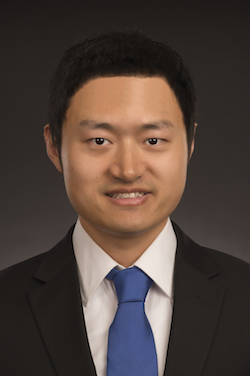ISU Professor Xiang Ma publishes paper in journal Nature Materials that builds knowledge bridge between the sequence and function of molecules
April 26, 2017
POCATELLO – Idaho State University’s Xiang Ma, research/adjunct assistant professor in the Department of Chemistry, is the lead author of the paper recently published in the journal Nature Materials that helps researchers understand the relationship between material sequence and structure at the molecular level.
 Nature Materials (impact factor = 38.9) is the No. 1 journal in the fields of material science and engineering, and, according to “Web of Science,” this is the first time an ISU researcher has published in it.
Nature Materials (impact factor = 38.9) is the No. 1 journal in the fields of material science and engineering, and, according to “Web of Science,” this is the first time an ISU researcher has published in it.
The title of Ma’s study was “Tuning crystallization pathways through sequence-engineering of biomimetic polymers” and was completed two years ago while working at the Pacific Northwest National Laboratory in Richland, Washington. Ma has been at ISU since August 2015.
This research has implications for energy storage and conversion, electronics, nanomaterials, biomedicine, biomedical devices and other fields.
“We can use those materials for a lot of applications in chemistry, biology, biomedicine and engineering,” Ma said.
He explained that there is a fundamental problem in material science of knowing the linkage of sequence and structure at the molecular level. His study addresses that problem and brings new insight into what kind of material sequence can create what kind of structure. Ma’s team, for the first time, provided direct evidence showing that nucleation pathways are indeed sequence dependent. His team also determined the dynamics and energetics of two-step pathways, and proposed a mathematical model to explicitly explain and predict sequence-dependent selection of self-assembly pathways.
This new study presents an important contribution to the clarification and explanation of the nucleation mechanisms, which has profound impact in biology, chemistry, geology, engineering and biomedicine. His team’s results shed new light on non-classical crystallization mechanisms and have implications in understanding living systems and drug formulations, as well as in predictable design of self-assembling polymer systems for applications in energy storage and conversion, nanoelectronics, sensing, filtration and biomedical devices.
“We can use what we know from this manuscript to design better sequences of molecules,” Ma said. “I think this is a starting point of a huge research project initiative where we understand the relationship between material sequence and structure. We can definitely initiate several different projects in different fields, which should benefit the entire University community.”
Ma said there is a potential for him to work on this subject matter with the Idaho National Laboratory, and he is excited about working with students and colleagues at ISU on these new discoveries.
“We will have a lot of students participating in these projects in the future,” Ma said. “It will help us recruit new students into the STEM (science, technology, engineering and math) fields.”
At ISU, he said his laboratory does fundamental studies like the one mentioned above, and it also does application studies such as developing biosensors to detect certain, important biomolecules like glucose, which could be important to diabetes patients or for developing biomedical devices.
Ma’s research is multidisciplinary, incorporating biology, chemistry, physics and engineering.
Ma moved to Pocatello with his wife, Jingjing Niu, assistant professor in the Department of Community and Public Health in the Kasiska Division of Health Professions. The couple has three children, 6, 3, and a newborn.
“I really like the scenario here,” Ma said. “The area has breath-taking scenario.”
Categories:
